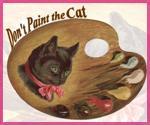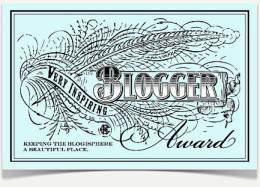I recently had two comments on Facebook that I feel I need to address in more depth. In a post asking for feedback on two 1850s bonnets, two followers commented:
“These scream the handmaids tail. Who would choose that look?”
“While I think they are very pretty perhaps some think of them as similar to those worn in the ‘The Handmaids Tale’.”

My first response focused on how different the bonnets in The Handmaids Tale, called “Wings”, are from my 1850s bonnets. This response was from the perspective of someone who has spent hundreds, if not thousands of hours looking at the shapes of straw bonnets and hats as they evolved through the nineteenth century. Pairing this up against a 20th & 21st century pop-culture reference is not fair. I will come back to this comparison, though.
My response after a decent night’s sleep is a bit more reflective. We know present day pop-culture influences how visitors perceive aspects of their museum visits, as well as trends in living history and historic costuming. The popularity of Bridgerton is a current example. The romantic, sensational series with its colorful Regency style gowns has drawn many to the Regency era with an emphasis on high fashion and color. (We shall see if this shifts to the Romantic era as (if) the series continues along the timeline.) For many, the Bridgerton books or series creates a positive feeling, one of love, romance, empowerment, up-beat music, inspiring colors, etc., for both visitors and costumers. An example of a less positive reaction would be the response from young visitors to a doll I used in a demonstration shortly after the release of the Annebelle movies (horror movies about a doll). I found the negative response so strong; I removed the doll from the table to eliminate the distraction. (Much more could be said regarding positive or negative underlying factors to connections and long-term results. Possibly another post.) With this context, knowing the visual association two individuals had connecting 1850s fashion bonnets with “wings” in The Handmaid’s Tale is helpful in that it makes me aware of potential future responses.
To understand those potential responses, it helps to understand the “wings.” (Many thanks to several friends who either read the book more thoroughly and/or watched the series, and assisted with some informational gathering last night.) The “wings” are the white bonnets worn by the handmaids in Margaret Atwood’s The Handmaid’s Tale. Under the “wing” a cap-like head covering called a whipple, is worn. Many articles say Atwood was inspired by the white caps depicted on the Old Dutch Cleanser containers produced in the mid-twentieth century. These caps are white, reaching forward of the face. (I will look for an in-text description of the wing asap.)
The current series was/is costumed by Ane Crabtree. Her costume for Offred, played by Elizabeth Moss, can be seen at the Smithsonian’s National Museum of American History. The “wing” is meant to have a tunnel-like brim that obscures the face from others while simultaneously limiting the gaze of the handmaid wearing it. In an article by Vulture, Crabtree describes the bonnet to be “a deliberate, physical impediment to control the women who wear them.” (Do read the entire section on the bonnets in this article.) Obviously, anyone who has spent time watching the series and/or reading the book at a level of making an emotional connection, could have a negative reaction to seeing a bonnet they visually relate to the wings.
Thus, pop-culture tags along with visitors’ base knowledge and personal experiences adding yet another dynamic to the interpretive experience.
What could this mean?
I am not sure how this specific influence will unfold as there are many factors both on screen and in real life. I anticipate, for some the bonnet in general may be seen as a restrictive garment similar to the connotation the corset has had for many years as a restrictive garment instead of a support garment. This could be useful in developing conversations if one is aware of the connection or it could be confusing and a lost opportunity if one is not.
Overall, I would love to have the time to explore the influence of pop-culture on visitor experience at historic site. We shall see if that is plausible.
A Visual Comparison – How I see the construction of The Handmaid’s Tale Bonnet vs an 1850s fashion bonnet:
When I look at the bonnets in The Handmaid’s Tale, my closest visual association is a type of Shaker bonnet made of woven straw. I see a solid white fabric bonnet constructed of a brim and crown. The brim is flat, having no rise from back to front. The front edge of the brim reaches far forward of the face. The brim side profile is rounded with no descending cheektabs. The crown is fabric draped over a molded form, pleated or gathered into the neckline. The pleated or gathered crown material is controlled by two rows of stitches with a small curtain falling below it. (I do not have a clear image directly from the back or inside.)

Comparing this to mid-1850s fashion bonnet: A straw bonnet of this time would be made from straw, while a silk bonnet would be silk over a foundation material. The top of the brim would be nearly flat in the 1840s. By the 1850s, the top of the brim would begin to rise. In the 1840s, the front edge of the brim would sit just forward of the face. As the bonnet moves into the 1850s, the front edge of the brim will pull back framing the edge of the face. From the side, the front of the brim descends into cheektabs that fall several inches below the side of the face. The cheektabs are wide in the 1840s, becoming narrower in the 1850s.
Beyond the shape and construction, I see a few other things when looking at the “wing”. We know the depth of the tunnel like brim is meant to obscure view of the face and limit what the wearer can see. The curve of the brim front into the sides would allow view of the ground immediately to the sides of the wearer if she has her head angled down. If her head was held up, the sides of the brim would block the view of her sides. This would cause her to
walk with her head angled down if she need to see what was to her sides. I suspect the white material would cause increased glare on sunny days, possibly to an uncomfortable point. (This is why black parasols were more common during the 19th century than white







